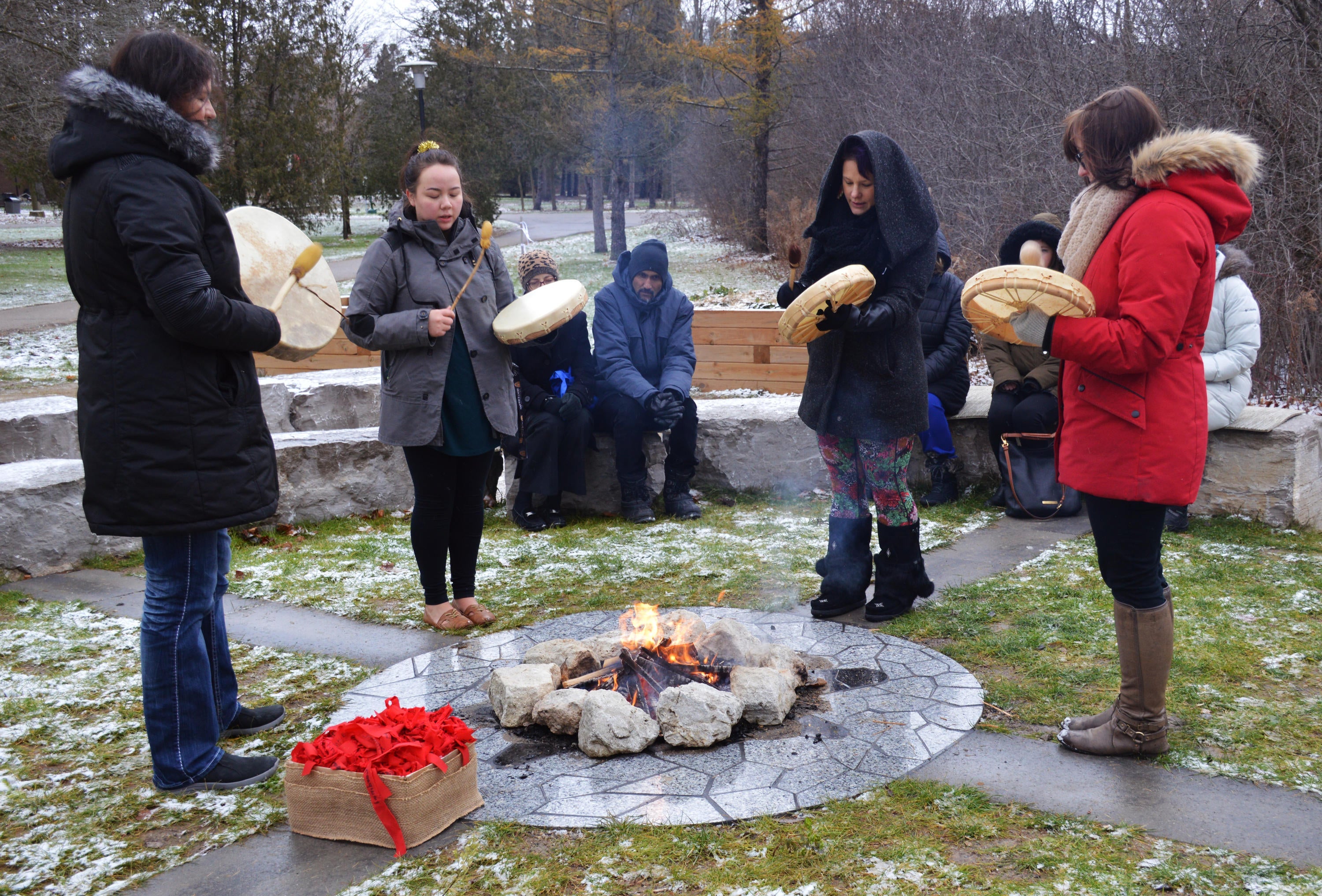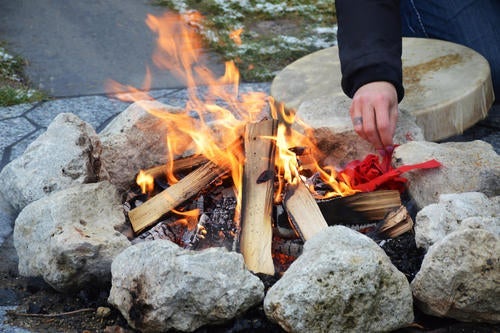On a wintery morning in late November, students, staff and faculty gathered around the Ceremonial Fire Grounds beside Laurel Creek for the opening of Bridge: Honouring the Lives of Missing and Murdered Indigenous Women, Girls, and Two Spirit People (MMIWG2S). The sacred fire site now plays a vital part in the Bridge initiative — and Bridge is now a key action in the 16 Days of Activism Against Gender-based Violence campus campaign.

“As we burned the ties from last year, we sang three prayer songs,” says Lori Campbell, Director of WISC. “The first was a strong woman song, the second a child’s lullaby, and the third, a 2 Spirit song.” WISC students and staff also opened the gathering with the Mohawk Friendship welcome, which will be familiar to a growing group on campus who join events such as the Indigenous Speakers Series.
“For me, offering the red fabric with names of MMIWG2S into the sacred fire is very important work because I believe that as the fabric burns, my prayers for them and their families go into the smoke and is carried up to Creator,” says Stephanie Marr, a fourth-year student in biomedical sciences and member of the Indigenous Students Association. “I pray that those who are missing are found, that those who were murdered rest easy, and that all of their spirits are safe now with Creator. I also pray for their families and that they receive closure and peace.”
The Bridge installation creates a space for all University community members to learn about the crisis of the murdered and missing, as they write a name on red fabric, tie it to the bridge and reflect on how we as a country can do better. Moll initiated the project 10 years ago when she questioned the reported statistic of murdered and missing Indigenous women and girls. Four years ago, she collaborated with WISC for 16 Days to bring the initiative to this campus. “The project has now evolved into a community-based relationship involving activism, knowledge sharing, and remembrance,” says Moll. “When my students ask me ‘what can I do?’ it's important that I not only tell them, but show them through practice.”

Officially opened last June on National Indigenous Peoples Day, the Ceremonial Fire Grounds and Medicine Garden are spaces for Indigenous students, staff, and faculty to feel safe, create community, and feel supported, says Campbell. Secondarily, the grounds “engage with our non-Indigenous peers who may come out to support us or who may come to learn from us.” For example, when Campbell taught The Indigenous Experience in Canada course, she held some of the classes at the Ceremonial Fire Grounds. “I have also used the space to teach, or guest lecture, for other classes on campus. And other faculty members have brought their classes to the space to learn.”
Most importantly, says Campbell, “I want the UW campus community to know that it is a sacred space that is open for all. It can be a place to have some quiet meditative time, or to join with us to learn about Indigenous cultures. I do, however, ask folks to be mindful that the Ceremonial Fire is different from a regular fire.” Staff and students of WISC are the caretakers of the space, along with MacDonald, and they facilitate its programming and specific protocols.
For Marr, who is Ojibway, caribou clan, the Ceremonial Fire creates opportunity to reflect and honour her own family. “Both of my maternal grandparents went to residential school and my mother is a 60s scoop survivor,” she says. “I have a family member who is on the list of MMIWG2S, so it was important for me to write her name on the red fabric and tie it on the bridge. My prayers that I offered when burning the red ties usually include her, but it is easy for me to extend my prayers to all MMIWG2S because they feel like family as well.”